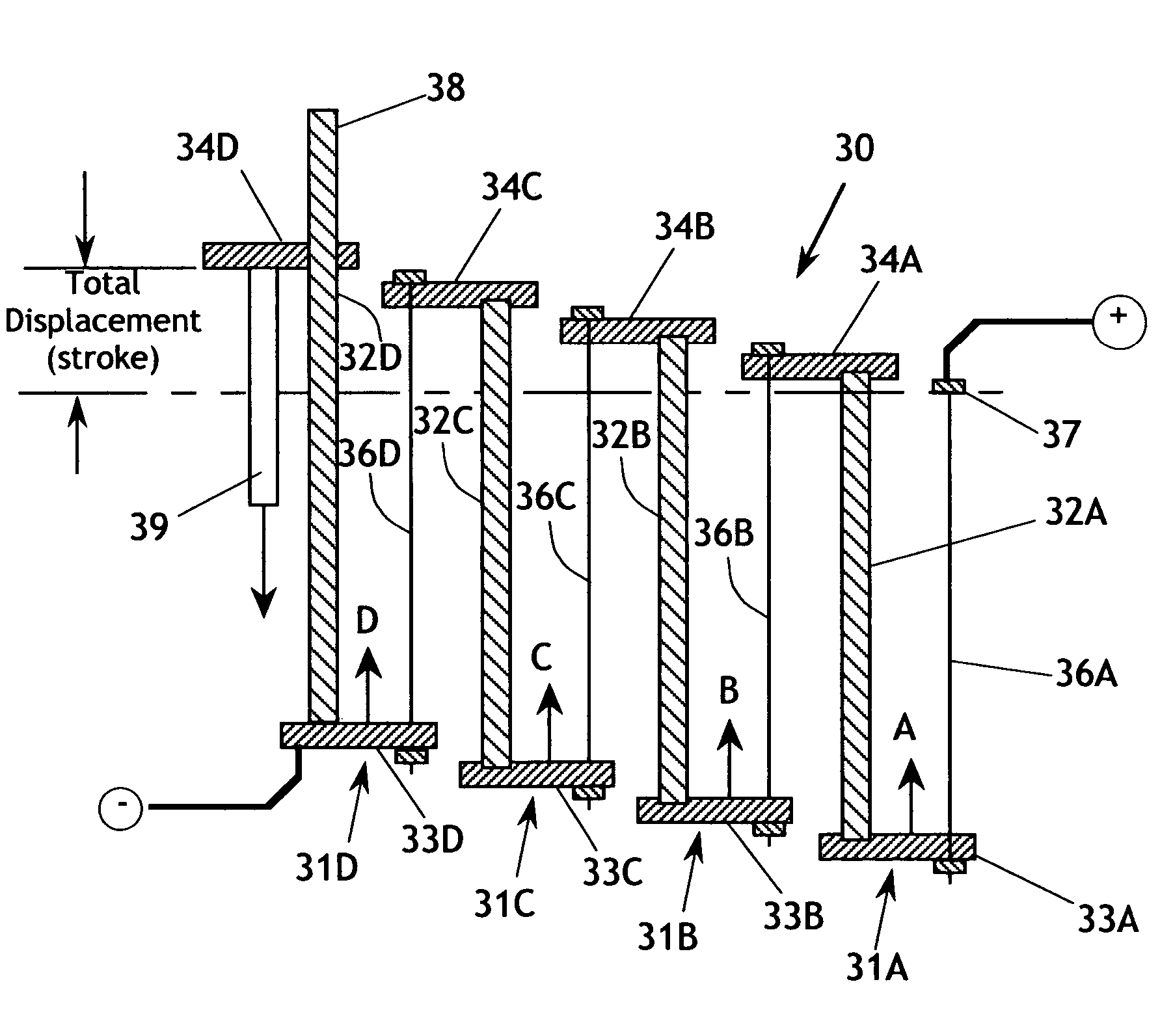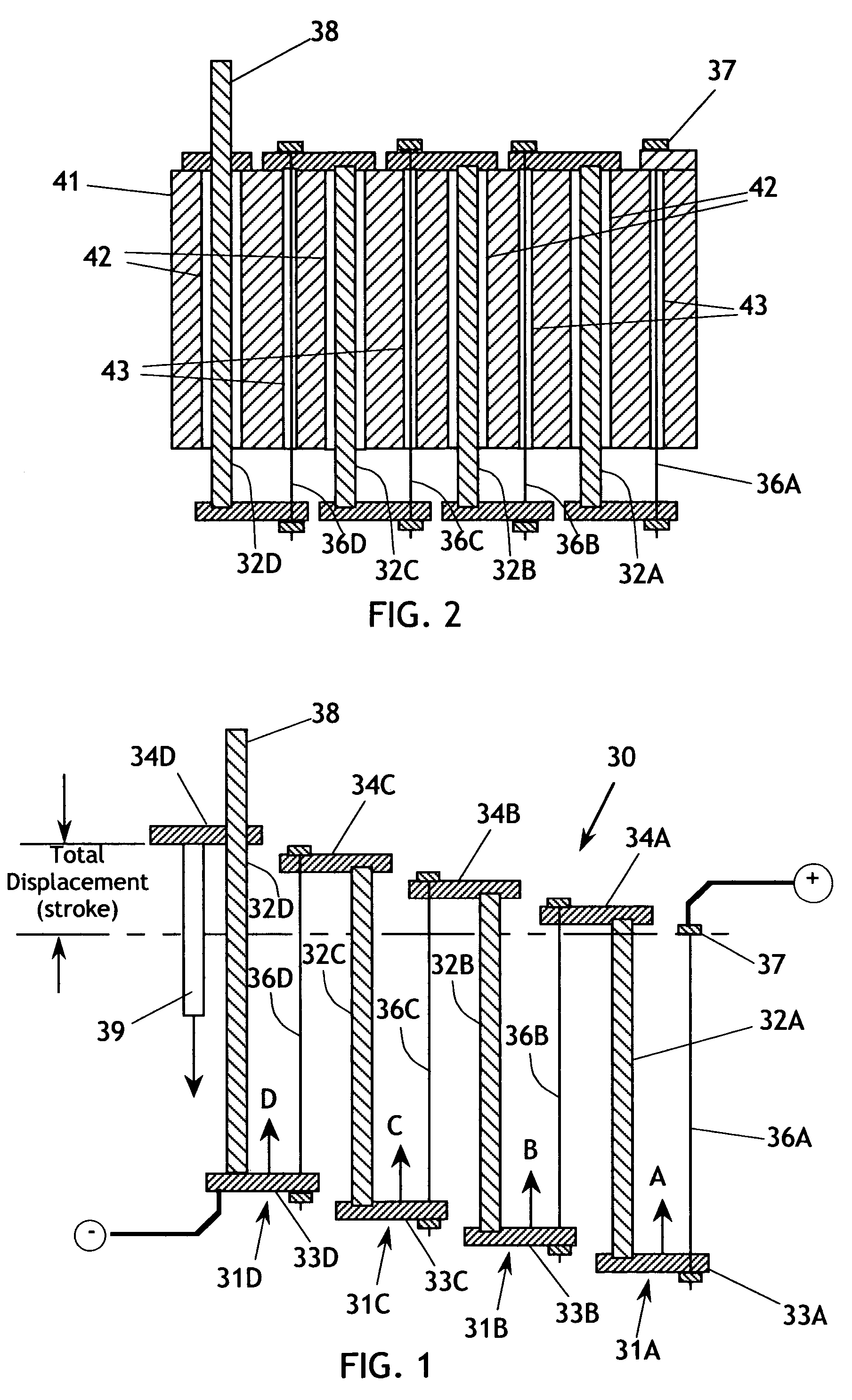Shape memory alloy actuators
a memory alloy and actuator technology, applied in the direction of generator/motor, machine/engine, mechanical apparatus, etc., can solve the problems of electromagnetic linear actuators, add another substantial mass to the device, and large devices, and achieve the effects of facilitating a range of stacking patterns, and reducing the number of strokes
- Summary
- Abstract
- Description
- Claims
- Application Information
AI Technical Summary
Benefits of technology
Problems solved by technology
Method used
Image
Examples
Embodiment Construction
[0062]The present invention generally comprises a linear actuator that employs at least one shape memory alloy component as the driving element. The invention provides relatively long stroke displacement with high force, and delivers reiterative operation over a large number of cycles.
[0063]With regard to FIG. 1, one significant aspect of the invention is the provision of a plurality of stages or sub-modules 31A-31D that form the linear actuator motor 30. Each sub-module 31 includes a longitudinally extending rod 32, and end brackets 33 and 34 secured to the lower end and upper end of the rod 32, respectively. The sub-modules 31 are arranged to translate reciprocally in the longitudinal direction. Note that the brackets 33 and 34 are generally parallel and extend in opposed lateral directions. A SMA wire 36A extends from the lower bracket 33A to an anchor point 37, SMA wires 36B extends from the lower bracket 33B of sub-module 31B to the upper bracket 34A of sub-module 31A, and SMA ...
PUM
 Login to View More
Login to View More Abstract
Description
Claims
Application Information
 Login to View More
Login to View More - R&D
- Intellectual Property
- Life Sciences
- Materials
- Tech Scout
- Unparalleled Data Quality
- Higher Quality Content
- 60% Fewer Hallucinations
Browse by: Latest US Patents, China's latest patents, Technical Efficacy Thesaurus, Application Domain, Technology Topic, Popular Technical Reports.
© 2025 PatSnap. All rights reserved.Legal|Privacy policy|Modern Slavery Act Transparency Statement|Sitemap|About US| Contact US: help@patsnap.com



